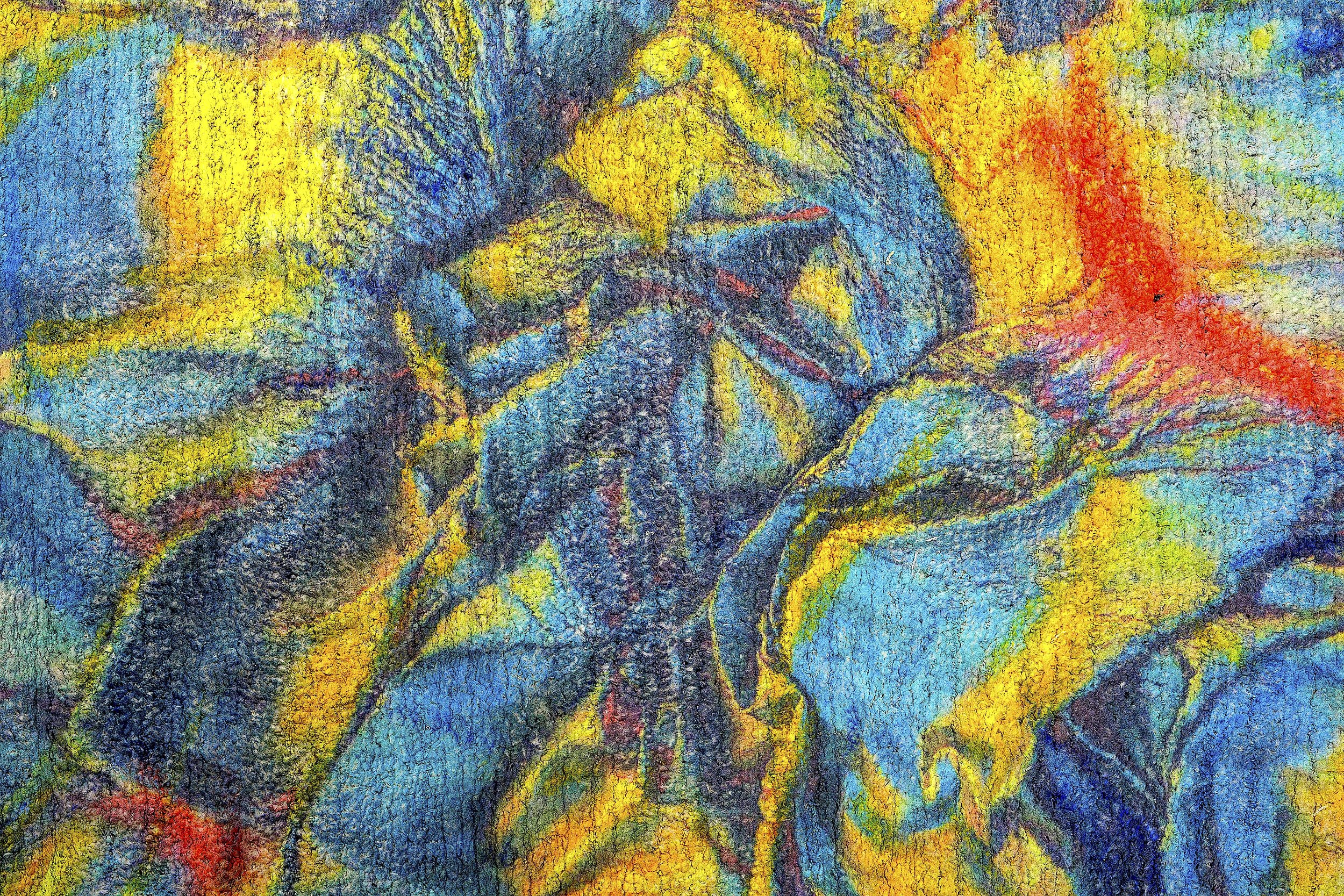Myth of the Ages
2023
This series of textile works titled Myth of the Ages draws inspiration from Hesiod’s "Five Ages of Man," a Greek creation story that traces the lineage of humanity through five successive "ages" characterised by different levels of development, technological progress, and moral conduct.
The first age, the Golden Age, epitomised peace, harmony, and abundance, with humans living in a utopian society free from suffering. They enjoyed a close relationship with the gods, who bestowed prosperity and long life upon them. The Silver Age followed, marked by increased aggression and competition among humans, straying from the harmonious ways of the Golden Age. With less piety and respect for the gods, humans faced shorter lifespans and more challenges.
The Bronze Age represented a further decline as humans grew more warlike, developing technologies and weapons for defence. This era was characterised by heightened violence, greed, and a turning away from the divine. The Heroic Age, its successor, celebrated legendary heroes like Achilles and Odysseus. Technological advancements continued, societies became more complex, and city-states emerged, laying the groundwork for democracy.
The fifth and final age, the Iron Age, signified moral decay, marked by widespread conflict, poverty, and corruption. It's often associated with the decline of Greek city-states and their eventual conquest by the Romans. The "Ages of Man" in Greek mythology serve as both a moral and historical framework, illustrating the cyclical nature of human progress and decline.
-
As a side note: Hesiod, an ancient Greek poet from the 8th century BCE, is renowned for his surviving works "Theogony" and "Works and Days." "Theogony" describes the origins and genealogies of Greek gods and goddesses, explaining the universe's creation and divine relationships. "Works and Days" is a didactic poem offering practical advice on farming, sailing, and moral living, including insights into the five ages of man characterized by virtue and degeneration.









